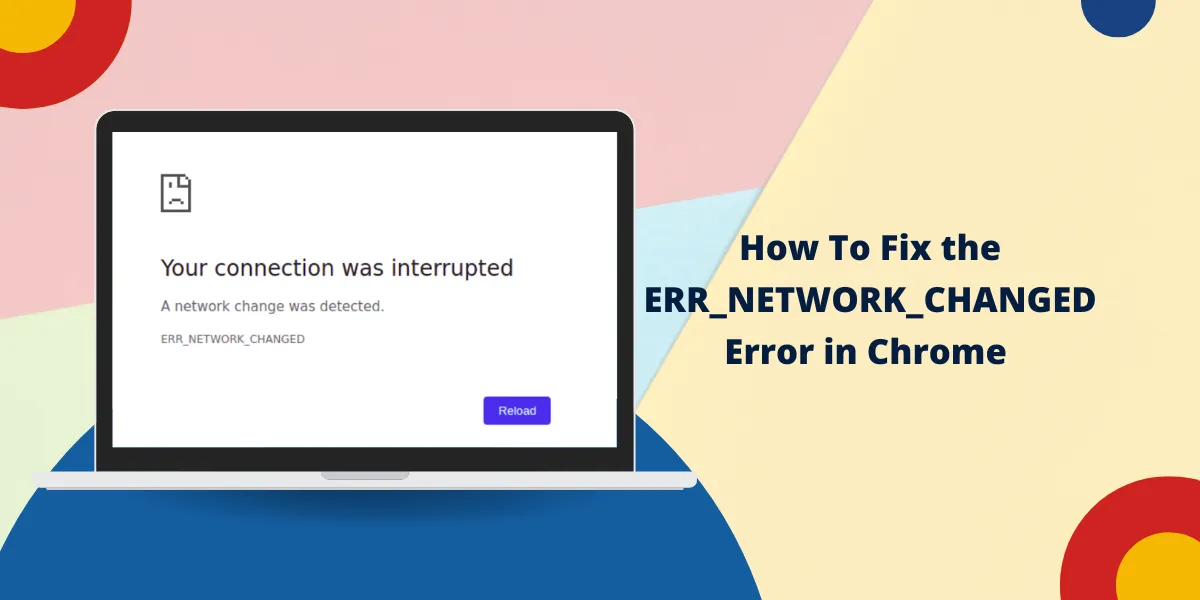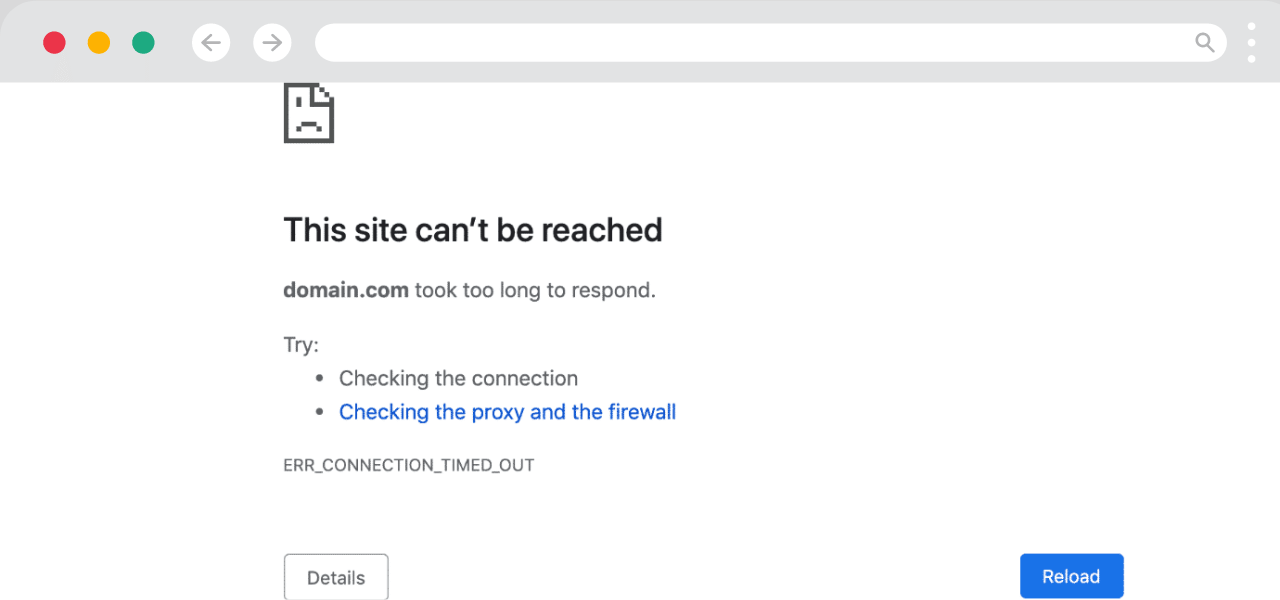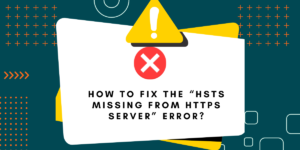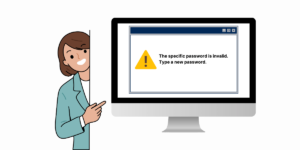What Does ERR_NETWORK_CHANGED Error Mean?
The ERR_NETWORK_CHANGED error in Google Chrome is a common connectivity issue that indicates your network connection was interrupted or changed while the browser was trying to communicate with a website server.
This error typically appears when you try to load a web page in Chrome. It means the network Chrome was using is no longer available, so Chrome cannot connect to the website server to retrieve the content you requested.
There are several potential causes of the ERR_NETWORK_CHANGED error, ranging from problems with your internet connection and network hardware to misconfigured browser settings and extensions causing conflicts.
Fortunately, this error can often be resolved through some simple troubleshooting steps to identify and correct the underlying cause. In this guide, we’ll cover the most common fixes and solutions to try when dealing with the ERR_NETWORK_CHANGED error in Chrome.
Key Takeaways
- The ERR_NETWORK_CHANGED error in Chrome indicates your network connection has been interrupted or changed.
- Common causes include problems with your WiFi, router, firewall settings, antivirus software, VPN connections, or Chrome extensions.
- Solutions include troubleshooting your network connection, router settings, firewall, antivirus, VPN, and Chrome extensions.
- Resetting Chrome settings or reinstalling Chrome can also fix the issue if it’s browser-related.
- Using the command prompt to flush DNS and renew the IP address may help resolve network conflicts causing the error.
Troubleshoot Your Internet Connection
The first step in troubleshooting the ERR_NETWORK_CHANGED error is verifying that you have an active, stable internet connection.
Here are some things to check:
Confirm the Connection is Working
Try loading other non-web-based internet services like email to see if your general internet connectivity is working. If other services connect fine, it points to a web-browsing-specific issue.
Restart Your Modem and Router
If you have an internet outage, restarting your modem and router often resolves connectivity problems. Unplug them for 30 seconds, then plug them back in and wait for them to reboot fully.
Check for WiFi Issues
If you’re connecting wirelessly, make sure your WiFi signal is strong in the location of your device. Also, try moving closer to the router or access point. Weak WiFi can cause frequent dropped connections.
Test with a Wired Connection
Connect your computer directly to your router via an Ethernet cable, then see if the error still occurs when browsing sites. If the wired connection works fine, it indicates a WiFi-specific problem.
Contact Your Internet Service Provider
For persistent connection issues, contact your ISP to see if they have a known outage or service disruption in your area that could be causing the problem.
Check Router and Firewall Settings
Router and firewall misconfigurations can sometimes interfere with Chrome’s ability to communicate with websites.
Here’s what to check:
Reset Your Router
Reset your router to factory default settings in case any malicious or incorrect configurations are made. After resetting, reconfigure it properly.
Check Router Firmware
Make sure your router firmware is updated to the latest version available. Outdated firmware can cause performance and connectivity problems.
Verify DNS Settings
DNS (Domain Name System) translates URLs to IP addresses. Incorrect DNS settings will prevent Chrome from locating website servers.
Disable Firewall and Security Software
Temporarily switch off any firewalls, web filtering, or anti-virus software on your router and computer. Re-enable after testing to see if they were blocking connections.
Allow Port 80 and 443
Configure your router and firewall to allow outbound data on port 80 HTTP and Port 443 HTTPS, which are required for web browsing.
Troubleshoot Antivirus and VPN Software
Antivirus programs and VPN services can sometimes interfere with Chrome’s ability to access the web.
Try these steps:
Disable Antivirus and VPNs
Antivirus software and VPN connections are common culprits of connectivity issues. Temporarily disable them to see if it resolves the problem.
Whitelist Chrome
If disabling antivirus fixes the issue, try allowing Chrome so your antivirus ignores Chrome’s processes and connections.
Switch VPN Locations
For VPN users, switch to a different VPN server location to see if that location works better with Chrome. Connection capabilities can vary across locations.
Clear VPN Cache and Data
Clear cached data and files related to your VPN software. Cached VPN data can become corrupted and cause conflicts.
Check for VPN Extension Conflicts
If you are using Chrome’s built-in VPN extension, try disabling other extensions one by one to check for conflicts. Also, disable the VPN extension itself as a test.
Troubleshoot Chrome Browser Issues
Since the error appears specifically in Chrome, browser-related problems could also be the cause.
Try these Chrome fixes:
Disable Extensions
Disable all extensions one by one and test if the error still occurs. Some Chrome extensions have been known to cause connection issues.
Reset Chrome Settings
Reset Chrome to its default settings in case any problematic configurations have been made. This option is under Settings > Advanced > Restore settings to their original defaults.
Clear Cache and Cookies
Clear your Chrome browser cache and cookies, which can become overloaded or corrupted over time and disrupt page loading.
Uninstall and Reinstall Chrome
If all else fails, completely uninstall and reinstall the latest version of Chrome. This wipes any corrupted files or registry issues that could be disrupting connectivity.
Roll Back Chrome Update
If the issue started after a recent Chrome update, roll back Chrome to the previous version to see if that fixes it.
Use Incognito Mode
Try loading pages in Chrome’s Incognito mode. If Incognito works properly, it indicates an extension or browser setting issue in normal mode.
Flush DNS and Renew IP Address
Using the Command Prompt to flush cached DNS data and renew your device’s IP address can clear up some connectivity and network conflicts that may cause the error.
Flush DNS
On Windows, open the Command Prompt and type ipconfig /flushdns to flush out corrupted DNS cache data.
On Mac, use the Terminal app and type dscacheutil -flushcache
Renew IP Address
On Windows, type ipconfig /renew in the Command Prompt to assign your device a new IP address.
On Mac, type sudo dhclient -r && sudo dhclient in Terminal.
Final Thoughts
The ERR_NETWORK_CHANGED error in Chrome can be frustrating, but resolving it is often just a matter of troubleshooting your network connection, router settings, VPN/antivirus software, and Chrome browser configuration. Stabilizing your internet signal, resetting Chrome to default settings, and flushing your DNS are some of the most effective ways to address the issue.
Carefully following the connectivity troubleshooting steps outlined in this guide should help narrow down and identify the specific factor causing the error on your system. With consistent testing and a process of elimination, you should be able to resolve the ERR_NETWORK_CHANGED error and regain normal website access in Chrome again.
Frequently Asked Questions (FAQ) About the ERR_NETWORK_CHANGED Error:
Why am I getting the ERR_NETWORK_CHANGED error in Chrome?
This error occurs when your internet connection is interrupted while Chrome is trying to communicate with a website. It could be due to WiFi dropouts, router issues, firewall blocks, VPN conflicts, or antivirus software interfering with Chrome.
How can I fix the ERR_NETWORK_CHANGED error?
Try restarting your modem/router, checking for WiFi and router configuration issues, disabling antivirus and VPNs, resetting Chrome settings, clearing cache/cookies, and flushing DNS. This will help identify and resolve the root cause.
Does this error mean my internet is not working?
Not necessarily. The error specifically relates to Chrome connecting to websites. Other internet services like email may still work fine, indicating a Chrome-specific issue rather than a complete internet outage.
Is the ERR_NETWORK_CHANGED error a Chrome bug?
Not usually. In most cases, this error is caused by network connectivity problems or software conflicts rather than an actual Chrome bug. To uncover the issue, troubleshooting the browser and network is required.
How can I prevent the ERR_NETWORK_CHANGED error in the future?
Make sure your router firmware, antivirus software, and Chrome browser are kept up to date. Also, use a stable, high-speed internet connection and avoid too many unnecessary Chrome extensions that could cause conflicts.

Priya Mervana
 Verified Web Security Experts
Verified Web Security Experts
Priya Mervana is working at SSLInsights.com as a web security expert with over 10 years of experience writing about encryption, SSL certificates, and online privacy. She aims to make complex security topics easily understandable for everyday internet users.



